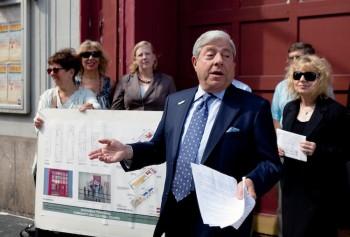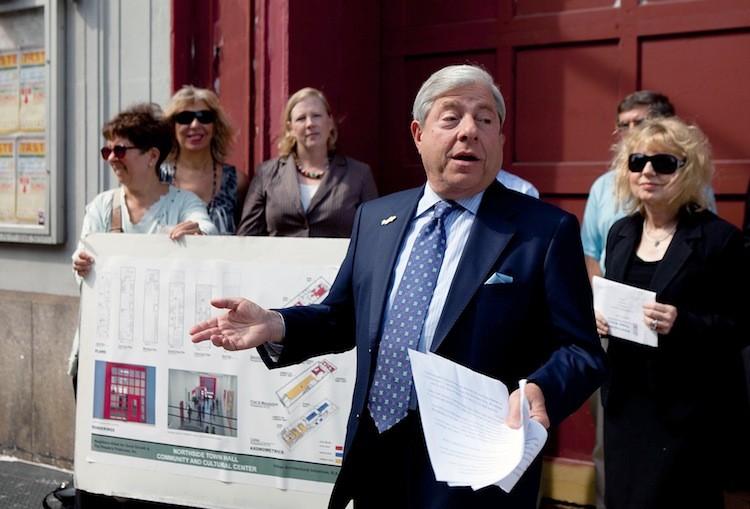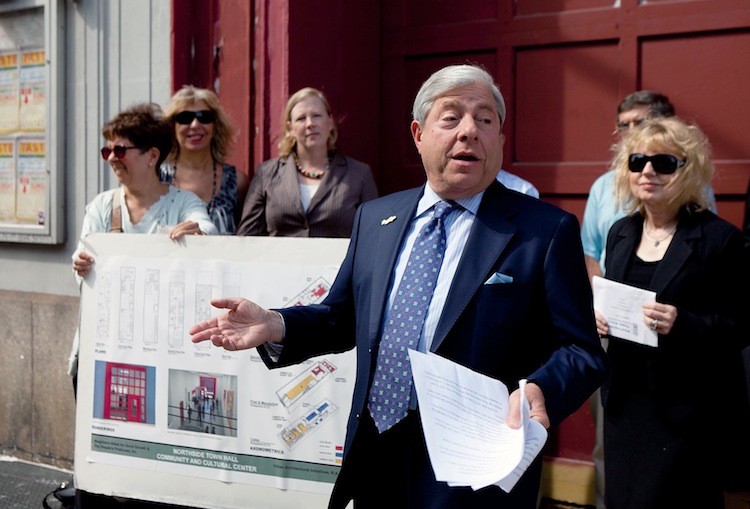NEW YORK—A firehouse that has been vacant on Wythe Avenue in Greenpoint Brooklyn since 2003 will be converted into a community center.
The project is now possible after years of effort and fundraising by two community organizations: People’s Firehouse Inc., and Neighbors Allied for Good Growth (NAG). Their dream is now coming true with the help of a $1.1 million contribution from the city.
“I’m sure you know I could go all day on what we love about Brooklyn, but if I had to pick one thing it’s certainly our diversity. And that’s why I know that this community center will be a vital contribution to North Brooklyn,” said Brooklyn Borough President Marty Markowitz.
“You know it’s going to be a hub of activity for the entire area, for families and kids, a place where community organizations and nonprofits can find affordable office and meeting space as well.”
The city made public a Request for Proposal seeking ideas on what to do with the firehouse. The People’s Firehouse and NAG won that bid. The organizations proposed to convert the firehouse into what will be called the Northside Town Hall Community and Cultural Center (NTHCC). Assemblyman Joseph R. Lentol raised the first $150,000 for the project from the state Assembly.
Private funding followed from individual contributors Norman Brodsky of CitiStorage, which has storage warehouses on the waterfront blocks away from the firehouse, and Tony Argento of Broadway Stages.
Neighborhood businesses and the night life industry contributed as well. NTHCC raised $75,000 this year and $100,000 last year through the Taste of Williamsburg and Greenpoint event, featuring Brooklyn’s top 50 restaurants. Brodsky lent space for the event at his waterfront storage facilities.
After years of fundraising by community organizations, the city stepped in with the $1.1 million contribution obtained by Markowitz and Councilman Stephen Levin.
“This is an example of a project that comes from the people and we’re just here to help,” said Levin. “This really belongs to the community and that’s what it’s going to be a testament to.”
Construction is expected to begin in the first quarter of 2012, according to Project Manager Rebecca Reich. An architect has already been selected, although no preliminary sketches are available. The NTHCC is currently in the process of securing financing from the city, which is dependent on the organization raising the remaining $200,000 for the project.
“I’m confident that we will be able to raise another $200,000 and be able to break ground in 2012,” said Felice Kirby, board member of NAG.
When complete the community center will include offices for NAG and the People’s Firehouse, provide space for local artists and performers, and house a firehouse museum.
History of activism
When Mayor Bloomberg moved to close down Engine 212 in 2003, the Williamsburg community wouldn’t have it. Protests ensued, but after months of effort the campaign to keep Engine 212 open was lost. NAG was formed to coordinate the efforts, but did not disband after the battle was lost. When the city put the firehouse on auction in 2004 and the possibility of it being converted to luxury condos came up, NAG intervened to block the action.
Decades earlier, in 1975, the city also attempted to close the firehouse. The community responded with an eighteen-month “live-in” protest, which ultimately saved the firehouse from closure.
“I think of all those folks 35-40 years ago that felt so passionately about this firehouse that they called it home for 18 months. They slept on the floor and they cooked here and ate here and they really reclaimed a public institution for the public,” said Levin.
“That’s the kind of activism that we can look back on and say, that’s our heritage in this neighborhood.”







